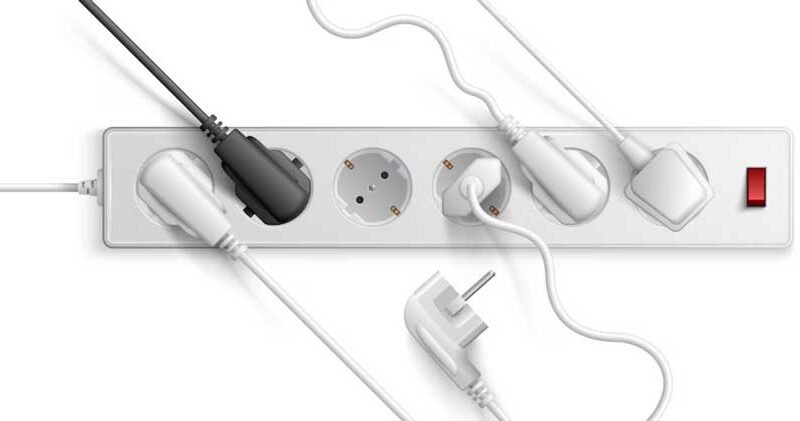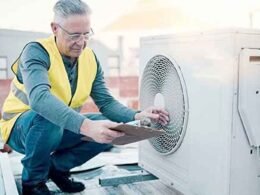Imagine this: You’re hosting a backyard BBQ or working on a home project, and you need to power up some tools or lights. You reach for an extension cord and plug it in.
As you try to accomplish the task, you suddenly see sparks or smoke. What you assumed was resolving an issue has escalated problems to a new level.
It is straightforward to forget about extension cords, but each has to be handled with care; otherwise, it can cause serious issues as a result of catching fire.
So, whether indoors or outdoors, knowing how to select and use extension cords properly goes a long way in securing a home, your devices, and, most importantly, your safety.
Keep reading to learn the best practices for using extension cords the right way.
1. Select the Correct Extension Cord
Begin by analyzing the setting and the electrical needs of the equipment. A cord meant for indoors does not have the protective covering needed for outdoor use and must never be utilized outside. On the other hand, an outdoor extension cord is made of soft, rugged, shielded materials that can withstand moisture, sunlight, and changes in temperature.
Next, check the cord’s amperage and wattage ratings. These figures should be equal to or greater than the total load for all connected devices.
For instance, heavy-duty tools like space heaters or circular saws tend to exceed the limit of light-duty cords. So, always check the manufacturer’s specifications to ensure compatibility.
2. Inspect Before Use
Before you use an extension cord, examine it carefully. Check for damages such as worn wires, broken insulation or bent plug prongs. Problems like these point to inadequate safety and should not be dismissed.
Furthermore, if your cord feels unusually hot or keeps causing circuit breakers to trip, it could be overloaded or damaged. In these situations, you should not use the drug anymore.
Additionally, repairing an extension cord with tape or splices can actually increase the risk, so avoid this at all costs. So, if a cord is damaged, change it so you do not put yourself at risk of electrical problems.
3. Prevent Overloading
Never connect a device if the extension cord’s amperage and wattage are lower than the device’s. Insufficient current through the lines can damage appliances such as heaters, power tools or microwaves. This added resistance produces heat, which can harm the cord’s insulation or cause a fire.
Also, don’t use the same cord to connect high-power devices, as the load from all the devices may exceed what the cord can handle.
Furthermore, one can combine simple tools to produce overload situations. Consequently, use specifically rated cords for every appliance to ensure safety, no overheating and no short circuits.
4. Maintain Proper Placement
Proper placement of extension cords is crucial for functionality and safety. Never conceal cords under rugs, carpets, or furniture since it can trap heat and increase fire risk.
Constant foot traffic over hidden cords can wear down insulation, exposing wires that can electrocute someone. Instead, use cord covers to protect them along the walls to reduce tripping hazards.
Do not position cords where they can be pinched by windows, doors, heavy furniture, or windows, as they can crush the internal conductors and compromise insulation.
Consequently, maintaining the careful placement of extension cords extends the cord’s life while reducing the chances of electrical accidents.
5. Disconnect After Use
Extension cords should be unplugged from the power source if they are not actively in use. Keeping them plugged poses the danger of electric shock, arcing faults, or electrical fires due to live current flowing in the cord, along with insulation wear, conductor fatigue, or overloading beyond rated specification stubbed bushes.
Continuous usage beyond reasonable thresholds accelerates thermal stress and mechanical wear on both the cord and receptacle, decreasing their lifespan while posing increasing risks to safety.
This is especially dangerous in places with high concentrations of moisture and foot traffic because there is a greater possibility of unintentional contact or breach of the protective barrier.
6. Avoid Unsafe Practices
Never connect multiple extension cords (daisy-chaining), as it increases electrical resistance and raises the risk of overheating or fire.
Additionally, never remove the grounding prong from a three-prong plug to fit it into a two-prong outlet. The grounding prong is essential for safety, preventing electric shock in the event of a fault. Always use properly rated cords and outlets to ensure safe, efficient operation and prevent electrical hazards.
7. Choose the Appropriate Cord for the Application
Choose extension cords based on length, gauge, and intended use. Longer cords require thicker wires (lower gauge numbers) to reduce voltage drop. For high-power tools and appliances, use heavy-duty cords with a higher amperage rating.
Medium-duty cords are suitable for office equipment and light workshop tools, while light-duty cords should only be used for small, low-wattage indoor electronics. Thus, matching the cord’s specifications to your needs ensures safe operation and prevents overheating or electrical failures.
Conclusion
By following these safety tips, you can ensure your extension cords serve you reliably without putting your home or loved ones at risk.
Whether working indoors or enjoying the outdoors, choosing the right cord, inspecting it regularly, and using it correctly will help you avoid hazards like fires, electric shocks, or equipment damage.
Stay mindful, and your extension cords will power your projects safely for years.












